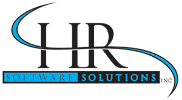The further ahead a business’ HR department can think during the HR system selection process, the more they are likely to feel prepared during years of ongoing use. Planning for solutions with prolonged benefits involves looking at the past, present and future: what procedures the company has used in the past, what its current needs are and how the new system will work once it has been implemented.
Since meeting the changing expectations of the industry involves using the latest technological capabilities, there’s an obvious concern with choosing software solutions that are regularly updated and will most likely continue to be over time. In an article for Talk Business, Scott Hartley said that asking about a HR software provider’s approach to updates is an important part of the search process.
Hartley writes that while most companies issue automatic software updates, “some will only release updates when a problem has been reported.”
“This is something that is always worth finding out because you don’t want to be waiting around for updates that could make the running of your business easier, especially if another supplier would provide updates immediately,” he adds.
Automating and integrating major important features of HR solutions gives them greater value in a business environment where big data and analytics are important. Scheduling can apply to the changes made to keep a system running efficiently as well as the processes that the solution will be used for, including recruitment, succession planning and meeting employee goals over an established period of time.
Consultants with experience onboarding different kinds of HR systems will work with companies to discover an appropriate solution and arrange a seamless transition to regular use. Knowing a consultancy with access to major providers ensures that companies are taking a more professional approach to their solution search.

